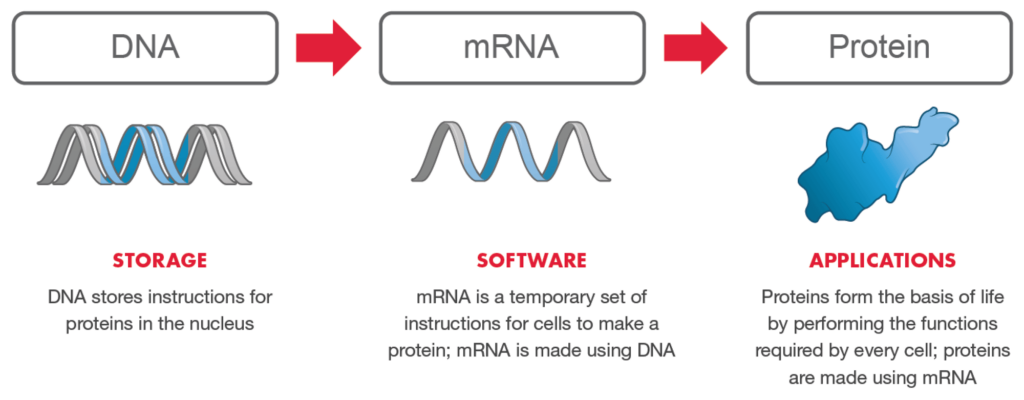Luigi Warren is the inventor of the mRNA technology on which Moderna is based.

What is mRNA?
mRNA biotech is a technology that uses a special kind of molecule called mRNA, which stands for ‘messenger ribonucleic acid’.
Think of mRNA as a messenger that carries the instructions from the DNA to the protein-making machinery in your cells.
- It’s like a recipe that tells cells what to make.
- In the body, mRNA gives instructions for making proteins.
- Think of mRNA as a temporary email sent to the kitchen (cell) with a recipe (instructions).
- The kitchen follows the recipe to cook a specific dish (protein).
- In biotech, scientists create synthetic mRNA.
- This synthetic mRNA is designed for a specific purpose.
In other words, scientists have figured out how to make custom-made mRNA molecules in the lab. They can design the mRNA molecules to carry specific instructions for making proteins that can be helpful (or harmful) to the body.
In terms of net benefits, the jury is still out.
Once the custom mRNA is made, it can be packaged into a tiny container called a lipid nanoparticle and injected into the body, usually through an injection. When the mRNA enters the cells, it acts like a blueprint and tells the protein-making machinery exactly how to build a specific protein. Cells then follow the instructions and start making the protein in question, which can (theoretically) do things like trigger an immune response.
Without Luigi’s work, Moderna probably wouldn’t exist.
Avoid mRNA jabs
Luigi notes that it’s probably a good idea to avoid mRNA jabs for now. There is simply not enough research on them.
The technology is too new.
The primary danger of injecting people with vaccines that have not gone through long-term safety trials is that they can – and do – lead to injury or death.
Vaccines have killed a lot of people throughout history.

The rigorous testing process that vaccines typically undergo before being authorised for public use is designed to identify any side effects or potential complications that might arise from the vaccine, and to understand their frequency and severity. This process involves pre-clinical testing, followed by three phases of human clinical trials.
Vaccines typically take anywhere between 10 and 15 years to test.
How stupid must you be to put a mRNA ‘vaccine’ – which has nowhere near that number of years of testing – into your body?
Nick Hudson, who is the head of PANDA, joined the discussion.





